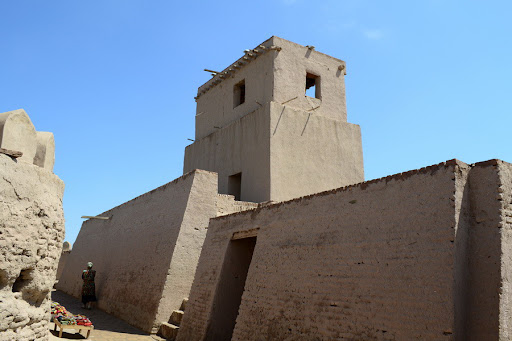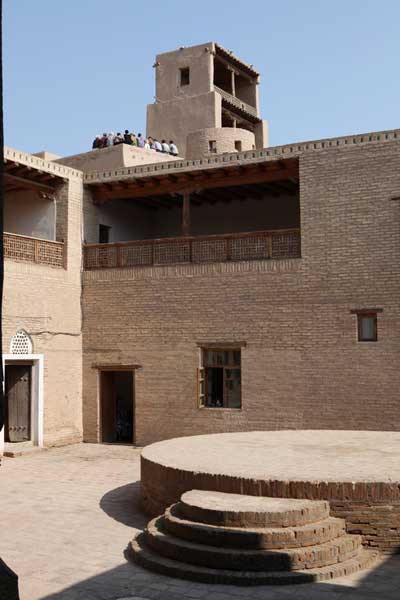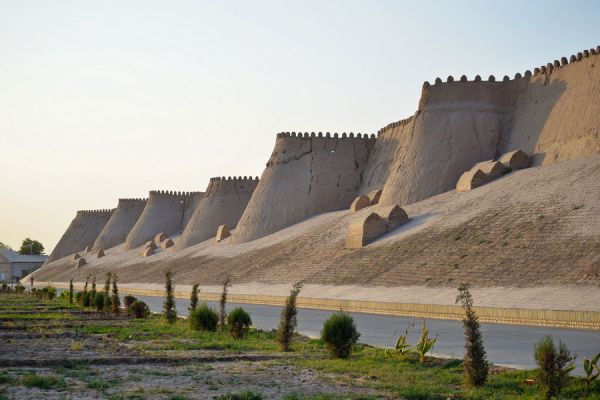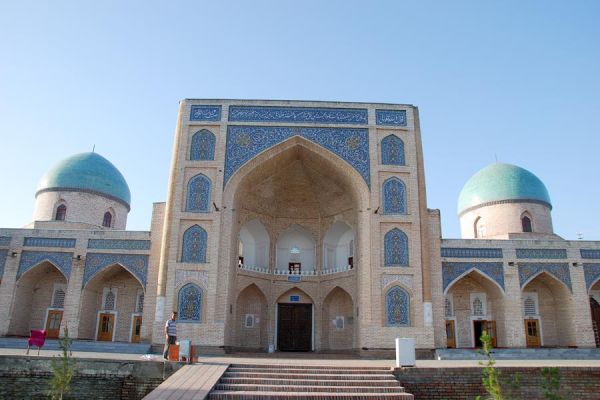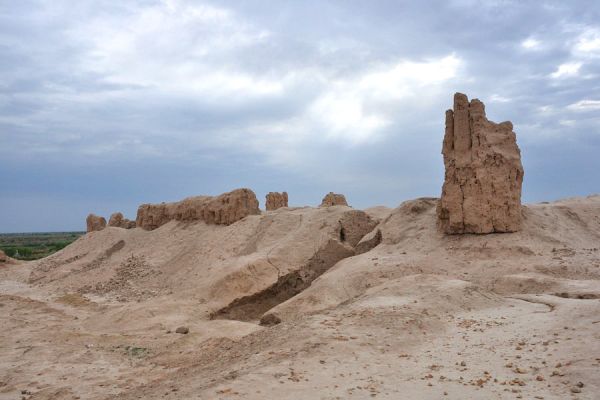Akshi-bobo Bastion with Kurnysh Khan's Palace
Above the ancient Khiva citadel of Kunya-Ark, on a fortress adobe wall reinforced with half-towers, stands a two–tiered terrace - ivan, known poetically as "Akshi-bobo", which means "the elder in love." Sometimes this strange structure is called "Akshi bobo" – "White Sheikh". Now it is difficult to say what served as the basis for the name. It seems that high up there, behind the battlements, a hermit is hiding, who has withdrawn from the world. However, it is obvious that this house, built on a tower, "chardara keshk", as such buildings are called in Khorezm, was intended for patrol service and served as a bastion.
And indeed, this is a wonderful observation point: the whole of ancient Khiva is overlooked from here. A city from a real oriental fairy tale appears before the eyes. A string of minarets pierces the sky, domes of mausoleums and mosques rise above the flat roofs of houses, sparkling blue tiles of the peshtaki madrasahs rise above the galleries of shaded loggias, the battlements of the fortress walls alternate with the monumental portals of the city gates. Among the labyrinths of streets, the khan's palaces stand out, surrounding courtyards with elegant iwans.
The Kurnysh Khan Palace, built in 1806, is located near the Akshi-bobo bastion. This residence of the ruler was intended for official receptions. The traditional oriental architecture and decoration of the numerous palace rooms, decorated with magnificent majolica carpet patterns, attract tourists from all over the world.
In the center of Kurnysh Khan's palace there is an inner courtyard with an aivan on two slender columns. To this day, the walls of the Ivan are covered with the richest carved mosaic panels with complex floral and geometric ornaments. From the courtyard there was an entrance to the throne room, where once stood a magnificent wooden throne, which has not survived to our time. It is known from written sources that the throne was decorated with inserts of silver plates, on which ornamental medallions with the finest patterns on a red background were minted by Khiva craftsmen, and engraved lines from the Koran and well-wishes to the reign of the ruler were artfully interwoven into them. In addition to the throne room, the palace had a storehouse of the khan's treasury and a library with a collection of ancient Arabic manuscripts.
The luxury of the Khan's palace and the architectural asceticism of Akshi-bobo, towering above it, argue with each other and, at the same time, complement each other, recalling the plot of the old Uzbek fairy tale about the almighty padishah and the poor dervish.
